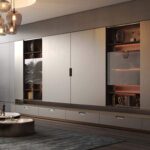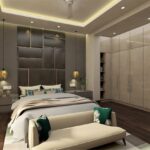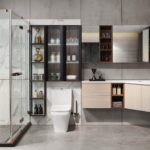Source Quality Materials For Your Full Home Design: 5 Tips
Overview
Embark on a journey of style and functionality. Explore our guide to full home design, sourcing quality materials, and crafting your unique spaces.
The details are not the details. They make the design.
Charles Eames
Have you ever envisioned your home as more than just a living space? What if it could be a canvas, a reflection of your style, a sanctuary that seamlessly blends aesthetics and functionality? As we venture beyond the basics of full home design, we step into a realm where sourcing furniture and materials, managing budgets, and overseeing intricate details become the threads weaving your dream space into reality.
Through this full home design blog, we’ll embark on an enthralling journey, exploring the nuances of furniture and material selection, budget optimization, and the fine art of project management. It’s not merely about finding the right sofa; it’s about crafting corners that breathe life into your memories and stories.
Imagine having the power to infuse bespoke touches into your full home design, to create a living space that’s uniquely yours. That’s the magic we uncover in our exploration of ‘Customization and Personalization’ in the upcoming chapters.
As we progress, we’ll address the ticking clock and the creative process in ‘Project Management and Timelines.’ Can you seamlessly merge the magic of creativity with the constraints of time? This section becomes your compass for navigating the intricacies of full home interior projects.
Quality control takes center stage in our journey. We’ll unravel the secrets of ‘Quality Control and Inspection,’ ensuring that every piece fits seamlessly into the puzzle of your home. From materials to the finishing touches, we delve into the art of meticulous inspection.
The foundation of any design lies in its materials. Here, we will navigate the sea of possibilities, guiding you through ‘Materials Inspection.’ We explore the finer details, from flooring to fabrics, ensuring that your full home design not only looks good but stands the test of time.
Stay tuned for the often-overlooked yet vital aspects of your full home interior project. Get ready to unlock the doors to a living space that mirrors your personality while seamlessly aligning with your daily life. This journey is not just about decorating; it’s about creating a haven where every room tells your story and every element functions effortlessly.
Sourcing Quality Materials For Full Home Design
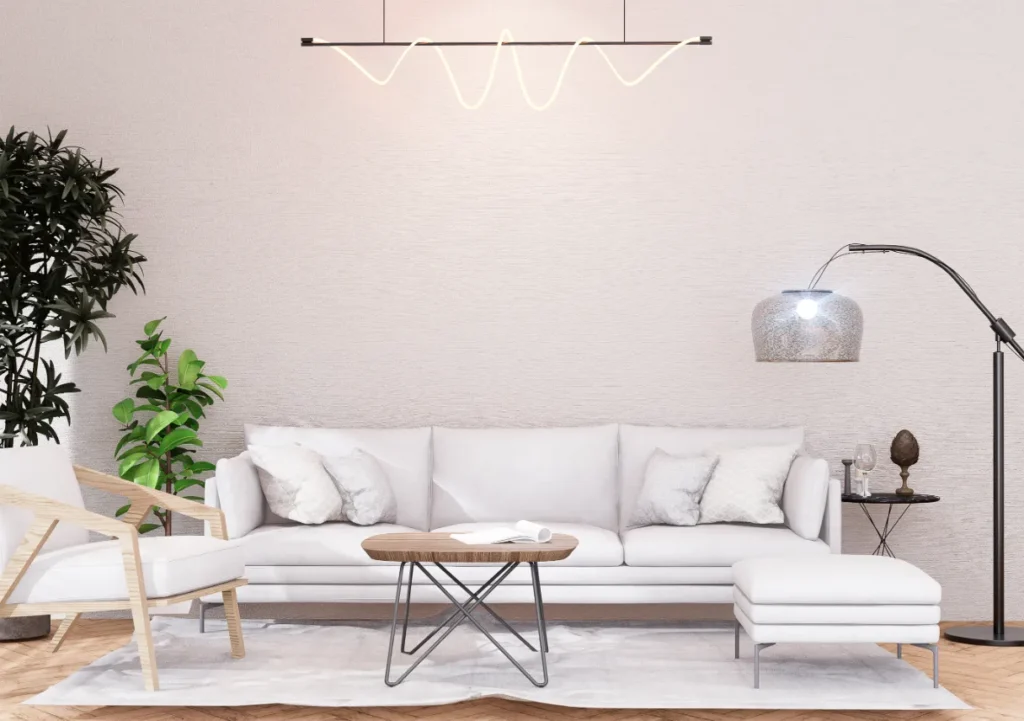
When it comes to crafting a full home interior that stands the test of time, the choice of materials plays a pivotal role. Let’s delve into the world of sourcing quality materials, exploring the essential components that lay the foundation for a home that seamlessly blends elegance with endurance.
Overview Of Essential Materials For Full Home Interior Projects
Flooring Materials: Inside every home, the floor, sets the stage for every design element. From hardwood and laminate to tiles and carpets, the options are vast. Consider the functionality of each space; for high-traffic areas, durable materials like ceramic tiles or hardwood might be ideal, while cozy bedrooms could embrace the warmth of plush carpets. Example: In a bustling kitchen, opt for easy-to-clean and durable materials like ceramic tiles or vinyl flooring, marrying practicality with style.
Wall Finishes: Walls are more than just separators; they are canvases waiting to be adorned. The choice of wall finishes can transform the ambiance of a room. From paint and wallpaper to textured finishes, each option contributes to the overall aesthetic. Example: In a bedroom aiming for tranquility, consider soft, neutral colors and textured wall finishes like shiplap or wallpaper with a subtle pattern.
Fabrics and Textiles: Fabrics inject life and personality into your interiors. From upholstery and curtains to throw pillows and rugs, textiles add layers of comfort and style. Consider the durability and maintenance of fabrics, especially in high-traffic areas. Example: In a family room, opt for stain-resistant and durable fabrics for the sofa, ensuring that your stylish centerpiece remains inviting and resilient.
Lighting Fixtures: Lighting is the unsung hero, enhancing the beauty of your space. From statement chandeliers to recessed lighting, the options are diverse. Choose fixtures that complement the overall full home design concept while providing ample illumination. Example: In a dining room, a carefully selected pendant light above the table not only illuminates the space but also serves as a captivating focal point.
How To Ensure The Durability And Longevity Of Selected Materials
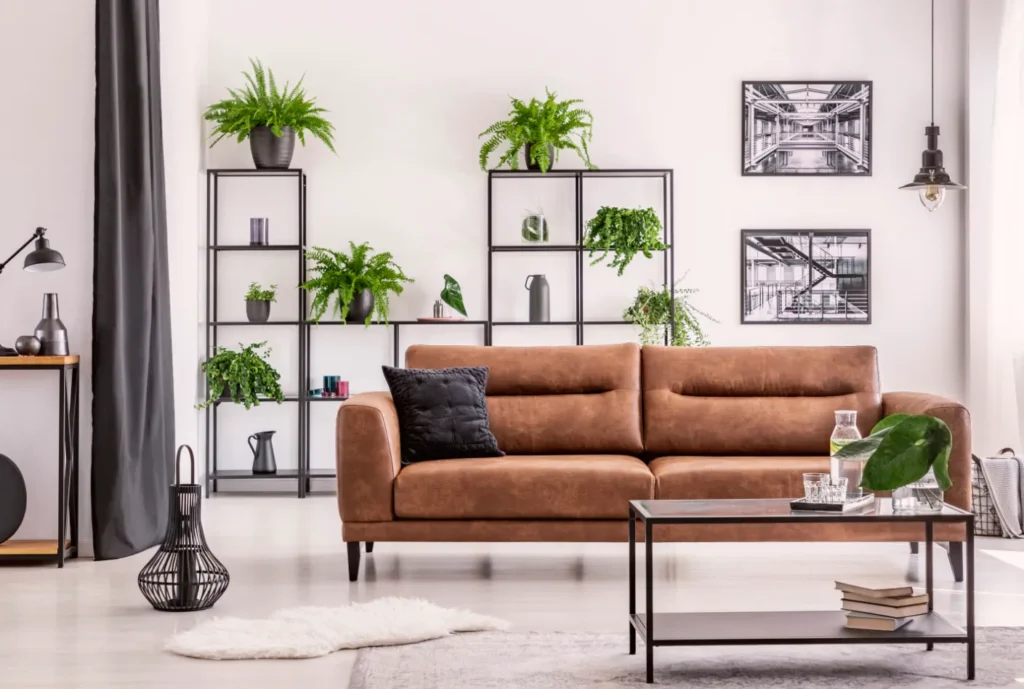
Research and Reviews: Before finalizing your material choices, delve into reviews and testimonials. Real-world experiences can offer valuable insights into the durability and longevity of specific materials.
Consider Maintenance Requirements: Evaluate the maintenance needs of each material. While a pristine white sofa may be visually appealing, it might not be the best choice for a household with active children and pets. Opt for materials that align with your lifestyle and maintenance preferences. Example: Choosing stain-resistant fabrics for dining chairs can be a practical decision, especially if family dinners occur regularly.
Consult with Experts: Seeking advice from professionals in the field can provide valuable guidance. Full home Interior designers and contractors can offer insights into the performance of different materials in various settings.
Invest in Quality: Quality often comes with a price, but it’s an investment in the longevity of your home. Choose materials known for their durability, even if it means adjusting the budget in favor of long-term value. Example: Investing in high-quality, hardwood flooring may initially be costlier, but its longevity and timeless appeal make it a wise choice for the long run.
In the intricate dance of full home design, the choice of materials emerges as a choreographer, shaping the narrative and durability of your living space. From the foundation laid by flooring materials to the artistry of wall finishes, textiles, and lighting fixtures, each element contributes to a harmonious composition.
As we progress, we’ll delve deeper into the intricacies of the design journey, ensuring that each choice resonates with the goal of crafting a home that seamlessly combines aesthetic appeal with enduring quality. Stay tuned for further insights on the journey to crafting your full home interior masterpiece.
Working With Suppliers And Vendors For Full Home Design
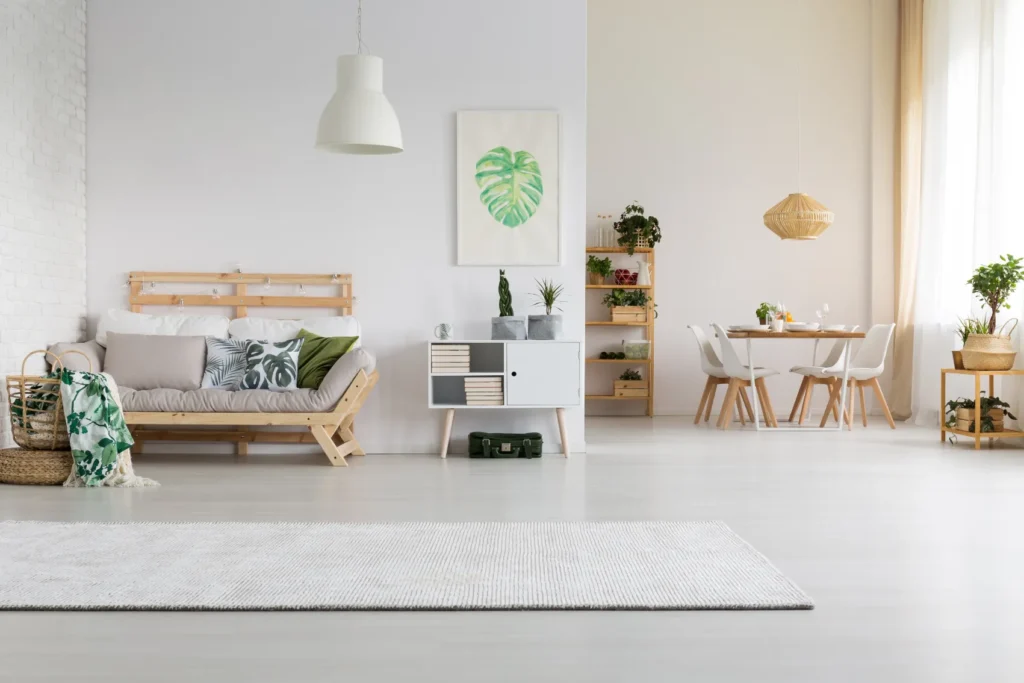
Embarking on your full home interior project is akin to conducting an orchestra, and suppliers and vendors are the musicians playing pivotal roles in the symphony of full home design. Let’s explore the art of working harmoniously with these crucial collaborators, ensuring that the procurement process aligns seamlessly with your vision.
Building Relationships With Reliable Suppliers
Research and Vetting: Begin by conducting thorough research to identify reputable suppliers and vendors. Seek recommendations from trusted sources, read reviews, and assess their track record in delivering quality materials. Building relationships with established suppliers lays the foundation for a smooth and reliable procurement journey.
Example: If you’re sourcing hardwood flooring, partnering with a supplier renowned for their commitment to sustainable practices ensures not only quality but also aligns with eco-friendly considerations.
Consistency and Reliability: Consistency is key when it comes to suppliers. Choose partners who consistently deliver materials on time and meet quality standards. Reliability ensures that your project progresses seamlessly without unnecessary delays. Example: A reliable lighting fixture supplier ensures that your chosen pieces arrive intact and on schedule, allowing for a timely installation that doesn’t disrupt your overall timeline.
Negotiating Prices And Terms
Transparent Budget Discussions: Establish open and transparent budget discussions with your suppliers. Clearly communicate your financial parameters and seek to negotiate favorable terms. Being upfront about your budget allows suppliers to provide suitable options that align with your financial plan. Example: When negotiating with a fabric supplier, being clear about your budget constraints can lead to recommendations for cost-effective yet quality textiles.
Bulk Purchases and Discounts: Explore the possibility of bulk purchases, as this often opens the door to discounts and favorable pricing. Negotiate terms that not only benefit your budget but also incentivize suppliers to provide additional value. Example: Planning to outfit multiple rooms with the same flooring material? Negotiating a bulk purchase can result in significant cost savings.
The Importance Of Clear Communication And Documentation
Detailed Specifications: Clearly communicate your design specifications to suppliers. Provide detailed information about the materials, quantities, and any specific requirements. Clarity in communication reduces the likelihood of misunderstandings and ensures that you receive exactly what you envision.
Example: When specifying wall finishes, communicate not just the color but also the desired texture and finish, ensuring the supplier delivers the exact product you need.
Comprehensive Documentation: Document every aspect of your agreement with suppliers. Contracts, invoices, and written agreements should detail pricing, delivery schedules, and quality standards. Comprehensive documentation provides clarity and protection for both parties.
Example: If negotiating with a furniture vendor, a well-documented agreement ensures that the selected pieces meet the specified quality standards and are delivered within the agreed-upon timeframe.
Customization And Personalization in Full Home Interiors
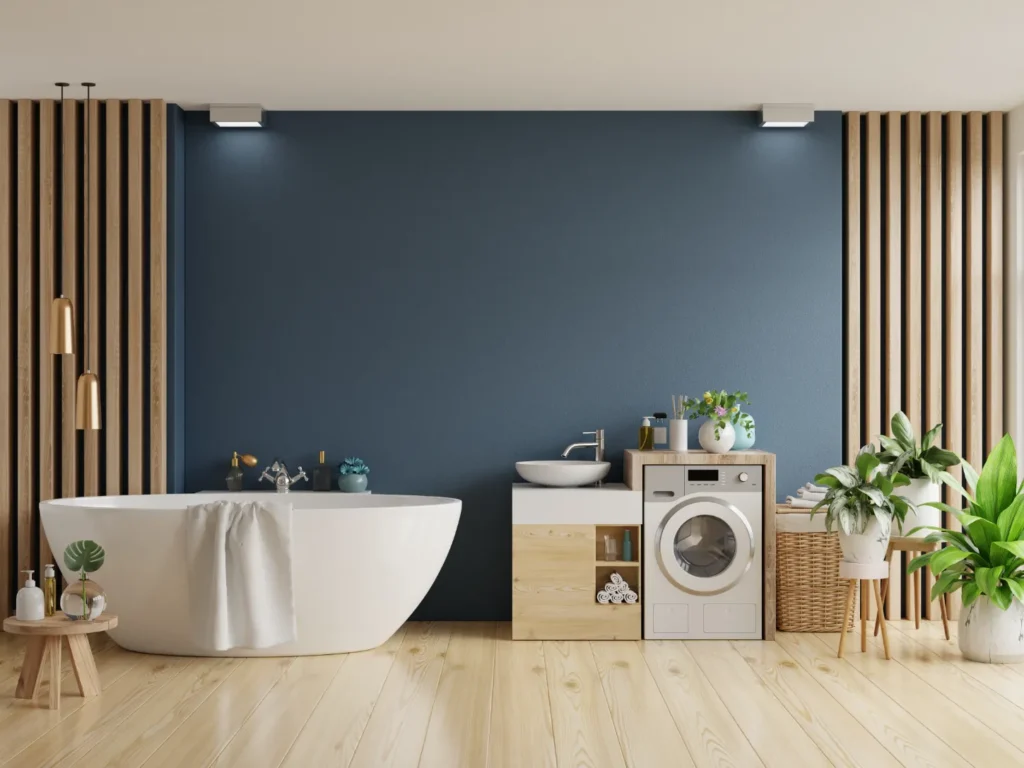
In the realm of full home design, customization, and personalization emerge as the brushstrokes that transform your living space from generic to truly one-of-a-kind. Let’s delve into the craft of imbuing every corner of your home with distinctiveness and individual charm.
Incorporating Personalized Elements Into Full Home Design
Tailored Furniture Selection: When it comes to furniture, the choices are vast, but the true magic lies in selecting pieces that resonate with your style. Opt for custom upholstery, unique silhouettes, or personalized finishes to make your furniture a statement of personal taste. Example: Imagine a living room adorned with a custom-designed sectional sofa, showcasing a fabric that complements your color scheme and a silhouette that perfectly fits the dimensions of your space.
Personalized Decor Accents: Infuse your personality into your home through personalized decor accents. From customized photo frames and artwork to bespoke throw pillows and rugs, these elements tell your story. Example: In a family room, consider creating a gallery wall featuring personalized artwork or family photographs, turning the space into a visual narrative of your cherished memories.
Working With Artisans And Craftsmen For Bespoke Furniture And Finishes
Artisanal Furniture: Engaging with skilled artisans and craftsmen unveils the realm of bespoke furniture, authentically mirroring your style. Whether adorned with hand-carved intricacies or crafted through meticulous woodworking, artisanal furniture introduces a dimension of craftsmanship and distinctiveness.
For instance, collaborate with a proficient woodworker to create a dining table featuring intricate hand-carved details, transforming it beyond mere functionality into a genuine work of art.
Custom Finishes and Textures: Consider custom finishes and textures for walls and surfaces. Whether it’s a unique wall texture or a hand-applied finish on cabinetry, these custom touches elevate your home’s aesthetic. Example: In a bedroom, opt for a custom wall finish like a subtle textured plaster to add depth and visual interest, turning a plain wall into a tactile and artistic feature.
Tailored Built-In Features: Built-in features, such as bookshelves, cabinets, or window seats, can be tailored to fit your space perfectly. Work with craftsmen to design and build these features, ensuring they seamlessly integrate with the overall design. Example: Transform a corner into a cozy reading nook by collaborating with a carpenter to build custom bookshelves and a window seat, creating a personalized retreat within your home.
Project Management And Timelines
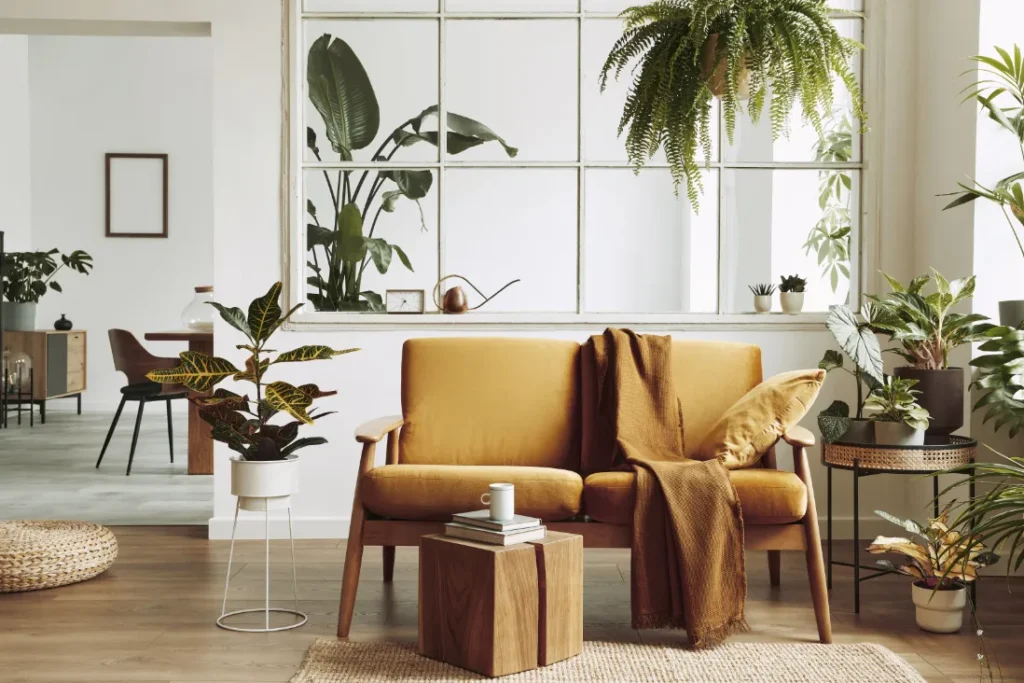
Embarking on a full home interior project is akin to orchestrating a symphony of design elements. In this section, we unravel the art of effective project management and timelines, ensuring that your vision transforms into reality seamlessly and efficiently.
Creating A Realistic Full Home Design Project Timeline
Comprehensive Assessment: Begin by conducting a comprehensive assessment of the entire project scope. Break down the tasks, from selecting materials to coordinating installations. This detailed overview forms the foundation for creating a realistic timeline. If your full home interior project includes renovating multiple rooms, allocate ample time for each phase, considering the intricacies of design, sourcing, and installation.
Consultation with Professionals: Engage with professionals, including designers, contractors, and suppliers, to gather insights on the time requirements for each stage. Their expertise can provide valuable input in crafting a timeline that balances efficiency with quality. Example: Consult with your contractor to determine the realistic time frame for tasks like flooring installations or custom furniture creations, ensuring alignment with your overall project timeline.
Coordinating Deliveries And Installations
Syncing Material Deliveries: Coordinate the delivery of materials with precision. Ensuring that materials arrive just in time for their installation minimizes storage needs and potential damage, streamlining the workflow. For instance, If you’re revamping your kitchen, schedule the delivery of cabinets, countertops, and appliances to coincide with the start of the installation phase, optimizing efficiency.
Sequencing Installations: Sequence installations strategically to avoid bottlenecks. Prioritize tasks based on dependencies, ensuring that one phase seamlessly transitions into the next without unnecessary delays. Example: If your project involves both painting and installing new lighting fixtures, plan the painting to conclude just before the fixtures arrive, allowing for a smooth transition from one task to the next.
Dealing With Unexpected Delays And Challenges
Contingency Planning: Integrate contingency plans into your timeline. Unforeseen challenges are inevitable, and having built-in buffers allows for adaptability without compromising the overall schedule. For Example, if you allocate extra time for potential delays in material deliveries, it gives you the flexibility to address unexpected issues without derailing the entire project.
Proactive Problem Solving: Approach challenges with a proactive mindset. Swiftly address issues as they arise, seeking solutions that minimize disruptions to the timeline. Communication with all stakeholders is key during such times. Example: If there’s a delay in the production of custom furniture, collaborate with the supplier to expedite the process or explore temporary solutions to keep the project moving forward.
Quality Control And Inspection
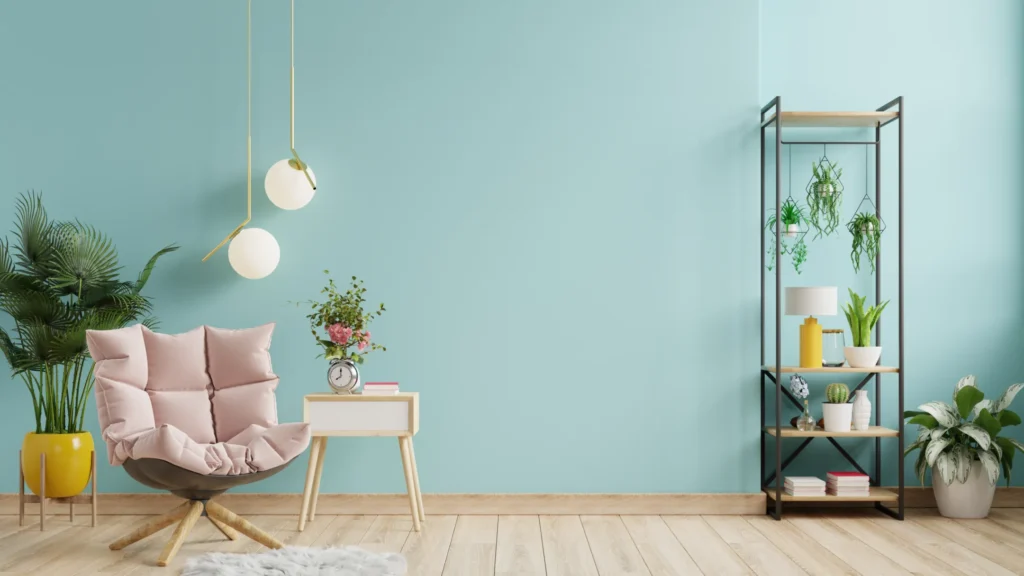
In the intricate dance of full home design, the spotlight turns to quality control and inspection, where every detail is scrutinized to ensure the seamless execution of your vision.
Quality Control Process In Full Home Design
Defect Identification: Check in by implementing a systematic quality control process that spans every aspect of your project. From materials to installations, a comprehensive approach ensures that no detail escapes scrutiny. Like, If you’re integrating custom cabinetry, conduct meticulous checks on the wood quality, finish, and overall craftsmanship to maintain the highest standards.
Regular Inspections: Incorporate regular inspections into the project timeline. Periodic assessments allow for continuous monitoring, catching potential issues early on and preventing them from escalating. You can schedule routine inspections during key phases, such as after flooring installations or before finalizing wall finishes, to address any deviations from the desired quality.
Checking For Defects And Ensuring Adherence To Specifications
Defect Identification: Train a keen eye on every detail, checking for defects or deviations from the specified standards. Addressing defects promptly ensures that the final outcome aligns with your full home design expectations.
Adherence to Specifications: Verify that every element adheres to the specifications outlined in your design plan. This includes color accuracy, material quality, and the precise execution of custom details. Example: If you’ve specified a specific paint color for the walls, confirm that it matches your vision during the painting phase, avoiding any last-minute adjustments.
Resolving Issues Promptly To Maintain Project Momentum
Efficient Communication: Establish efficient communication channels to promptly address any issues identified during inspections. Timely communication ensures that resolutions are swift, preventing disruptions to the project timeline.
Adaptable Solutions: Approach issue resolution with adaptability. Seek solutions that maintain project momentum without compromising the overall quality of the design. Collaboration with suppliers and craftsmen is crucial during this phase. For Example: If there’s a delay in the delivery of a specific material, explore temporary alternatives to continue the project flow, ensuring that momentum is sustained.
Conclusion

From the meticulous sourcing of quality materials and collaboration with artisans to the artful orchestration of project management and the critical eye of quality control, every facet has been explored to ensure your vision unfolds seamlessly.
In the second part of our exploration, we delved into the nuances of customization and personalization, breathing life into your space with bespoke elements. Project management and timelines emerged as the conductors orchestrating the symphony of your full home design, ensuring a harmonious balance between creativity and efficiency. Quality control and inspection acted as vigilant guardians, guaranteeing the fidelity of your design vision.
With every decision made, from choosing materials to crafting bespoke elements, you have not just designed a home; you’ve curated an environment where every detail reflects your personality and lifestyle. Your full home interior is not merely a design; it’s a living testament to the artistry of your unique story.
The White Frame is not just another interior design and build firm, we are proud to offer you the professional service levels of global standards and a deep respect for both contemporary and traditional interior design, Headquartered in Gurgaon, and extend our services across diverse cities, including Gurgaon, South Delhi, Delhi-NCR, North India, Mumbai, Chandigarh, Jaipur, and Agra.
Explore some of our work here!
Cheers to the creation of your dream home!




